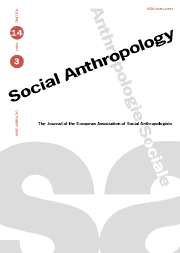No CrossRef data available.
Nuaulu head-taking. Negotiating the twin dangers of presentist and essentialist reconstructions
Published online by Cambridge University Press: 17 January 2003
Abstract
In October 1992 two transmigrants were murdered, and their heads removed, by Nuaulu from south Seram, eastern Indonesia. Until these events, head-taking had been assumed to be part of Nuaulu history. Media coverage and the court case which followed confirmed the prejudices of non-Nuaulu in the Moluccas about Nuaulu practices, and forced anthropological observers of Nuaulu life to re-assess their interpretation of the role which the idea of taking heads might play in contemporary belief. In this paper, direct knowledge of these events is used to examine the relationship between what we know about historical Nuaulu practices of head taking, current beliefs, and the circumstances of the 1992 homicides. It is suggested that analyses which see these events as a culturally eroded but otherwise unmodified version of what went before are fundamentally mistaken. It is concluded that the so-called ‘traditional’ features of contemporary homicides must be set against some ‘imagined past’ rather than what is necessarily historically authentic.
- Type
- Research Article
- Information
- Copyright
- © 2002 European Association of Social Anthropologists




